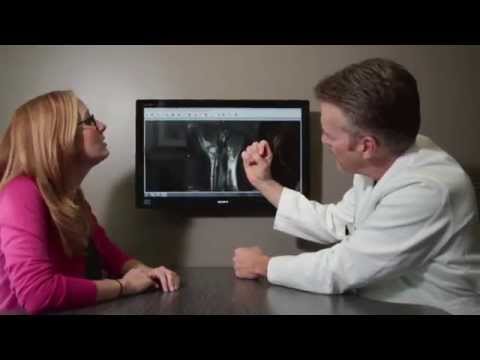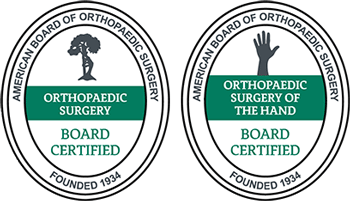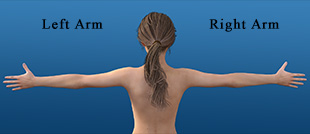Scaphoid Fracture Treatment in Dallas
Contents
- 1 Understanding Scaphoid Fractures
- 2 Common Causes of Scaphoid Fractures
- 3 Symptoms of Scaphoid Fractures
- 4 Accurate Diagnosis of Scaphoid Fractures
- 5 Comprehensive Treatment Options for Scaphoid Fracture in Dallas
- 6 Contact Dr. Knight Today
- 7 Scaphoid Fracture Fact Sheet
- 8 Frequently Asked Questions:
- 9 Videos
- 10 Animated Videos
- 11 Surgical Video

Scaphoid fractures account for as many as 80% of all carpal bone fractures. If you’ve injured your wrist, it’s likely that a scaphoid fracture is the problem. Young adult males have a slightly higher incidence of this type of injury, but a scaphoid fracture can happen to anyone. If you’re experiencing wrist pain, especially after a fall, you should see your doctor for a professional diagnosis. Here’s what you need to know to prepare for your appointment and the next steps with a scaphoid fracture.
Understanding Scaphoid Fractures
A scaphoid fracture is a break in one of the carpal bones in the wrist. The wrist has two rows of four small carpal bones each. They sit at the base of the hand, just past the ulna and radius bones of the forearm. These small bones are susceptible to fractures when you fall on your outstretched hand.
The scaphoid bone is one of the carpal bones. It’s on the thumb side of the radius, linking the upper and lower rows of carpal bones.
Common Causes of Scaphoid Fractures
The most common cause of a scaphoid fracture is a fall onto an outstretched hand. This injury may also result from a similar impact if you’re in a car accident or playing sports, where your hand meets extreme force while outstretched. If you play sports, skate, snowboard, or skateboard, you can decrease your risk of suffering from a scaphoid fracture by wearing a wrist guard.
Symptoms of Scaphoid Fractures

A scaphoid fracture typically causes pain, tenderness, and swelling in the wrist. This is usually located around the base of the thumb. In minor fractures, the pain is often minor as well. You may not realize that you’ve fractured the bone and mistake the injury for a minor sprain or strain.
Some people with a scaphoid fracture find it difficult to grasp or pinch items. You may not be able to move your wrist. In some cases, you’ll notice a small bump or other deformity around the wrist or thumb as a result of the fracture.
Accurate Diagnosis of Scaphoid Fractures
The nature and extent of the injury will inform the proper treatment plan, making a precise diagnosis key. If you have pain around the base of the thumb that doesn’t resolve or significantly lessen within a day or two, you should see a doctor to determine whether you have a scaphoid fracture.
Methods of Diagnosis
Your doctor will typically begin with a physical examination. The physician will look for bruising, swelling, and loss of motion. If a scaphoid fracture is likely, the doctor will typically order imaging tests such as:
- MRI scan: MRI scans can detect a scaphoid fracture and soft tissue damage shortly after the injury.
- CT scan: A CT scan can help determine whether bones are displaced.
- X-rays: X-rays may not detect a scaphoid fracture until several days after the injury, so they’re often used later in the process.


Location of the Fracture
Seventy percent of scaphoid fractures occur at the middle of the bone, in an area known as the “waist.” The scaphoid may also fracture at the proximal end near the body or the distal end that points away from the forearm.
It’s important to know where the fracture is, because a proximal fracture is at a higher risk of disrupting blood flow to the thumb. If this occurs, part of the scaphoid bone can die in a process known as avascular necrosis. Avascular necrosis can cause ongoing problems with the wrist, so it’s important to address this complication quickly.
Fracture Type
Scaphoid fractures are either non-displaced or displaced. A displaced fracture occurs when the bone fragments have moved out of their normal position. This can leave gaps between the bone fragments. A non-displaced fracture occurs when the bones remain in place and line up properly.
Comprehensive Treatment Options for Scaphoid Fracture in Dallas
Treatment options vary depending on the location and severity of the fracture. Every case is different, so you’ll get a personalized treatment plan for your injury that may include some of the following options.
Nonsurgical Treatment
Scaphoid fractures are usually immobilized as part of any nonsurgical treatment plan. This keeps the bone fragments in place so they can heal properly. Your doctor may order you to wear a splint or cast. A split only stays on for three to five weeks and is used for minor injuries.
Casts usually cover the forearm, wrist, and thumb. Casts usually stay on for six to eight weeks. A bone stimulator may be used to speed recovery. This device emits low-intensity electromagnetic waves to promote healing.
Your doctor may also perform a nonsurgical procedure known as a closed reduction. This involves pushing the bones back into place from outside the body. You will usually receive a local anesthetic or general anesthesia so you don’t experience any pain during this procedure.
Surgical Treatment
If you have a displaced scaphoid fracture, your doctor may opt for surgical treatment. The bones are moved back into place through a process known as reduction. Internal fixation is used to secure the bones with wires, plates, and screws. Your surgeon may also use a bone graft to help the injury heal faster.
Contact Dr. Knight Today
If you’re suffering from wrist pain, make an appointment to see Dr. Knight as soon as possible. A scaphoid fracture shouldn’t go untreated, as it can cause severe complications, including reduced blood flow and bone death. Dr. Knight is an expert in treating hand and wrist injuries. You’ll get a detailed diagnosis and personalized care plan to help you heal as quickly as possible and return to your normal activities.
Scaphoid Fracture Fact Sheet
| What causes scaphoid fracture? | Scaphoid fractures are caused by trauma to the scaphoid bone of the wrist, usually as the result of a fall on an outstretched hand focused on the thumb side. |
| What can I do for a scaphoid fracture at home? | The scaphoid is a delicate bone with a precarious blood flow, so home treatment without the aid of a medical professional is not recommended. |
| Are there any medications that can be used to treat a scaphoid fracture? | No specific medications are indicated for the treatment of a scaphoid fracture, but anti-inflamatories may aid in healing, and painkillers can act to assuage discomfort caused by either the initial injury or the healing process. |
| What are the long term effects of a scaphoid fracture? | If not treated correctly, the blood flow of the scpahoid can be cut off completely, which will cause the bone to die, and in turn cause intense pain. In severe cases an implant for the bone may be required to restore function. |
| What methods does Dr. Knight use to treat a scaphoid fracture? | Splinting and electrostimulation can aid in speeding up the healing process if the bloodflow to the bone is steady. Surgery may be necessary in more severe cases. |
Frequently Asked Questions:
Can a scaphoid fracture heal on its own?
Due to the sensitive nature of the bone involved in this particular fracture, it cannot be left to heal on its own, and it is inadvisable to take this tack. It is important to see a doctor as soon as possible if you feel you may be suffering from a scaphoid fracture. If the condition is left untreated for too long, then the blood supply to the scaphoid bone can be compromised, which can cause the bone to die, and this leads to complications, pain, and loss of motion and use in the wrist, which can have devastating effects.
How long does it take for a scaphoid fracture to heal?
All going well, from initial treatment it should take an injury to the scaphoid bone about ten-twelve weeks to heal back to full use and full range of motion. Of course, there are always complications that can arise, and many factors, including age, general health, bone health, and regular activity can also affect the speed of healing, but ten to twelve weeks is a good estimate, without any complications.
How exactly can the scaphoid bone get fractured?
Fractures to the scaphoid bone are caused by a very specific type of injury, typified by a fall onto the outstretched hand, with the wrist flexed and the majority of the force on the radial side of the wrist. This is most commonly suffered by athletes or anyone who falls unexpectedly and tries to stop their fall with their hands, but it can also be caused by an automobile accident, where the wrists slam into the dashboard or the steering wheel, which mimics the circumstances of the fall.
Do I need surgery to repair my scaphoid fracture?
As with most fractures, surgery is always a possibility, but conservative treatment is usually effective as long as the scaphoid bone maintains proper alignment during the healing process. If the bone is set and there is no growth detected, or there are indications that the bone is dying anyway, then surgery will be necessary.
Videos
Animated Videos
Surgical Video
Note: The following video contains graphic images.
Disclaimer
HandAndWristInstitute.com does not offer medical advice. The information presented here is offered for informational purposes only. Read Disclaimer

























